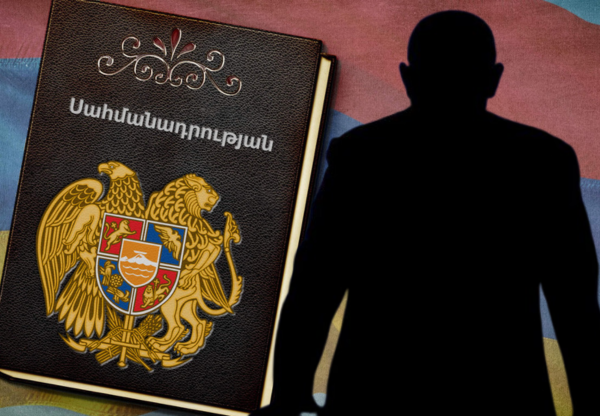Today.Az » Analytics » Pashinyan's allegation augurs Armenia's deviation from peace talks
15 November 2024 [20:25] - Today.Az

Politics is a fascinating and intricate art form, but it can quickly turn toxic in the hands of the wrong individuals. As COP29, a crucial climate conference in Azerbaijan, moves forward seamlessly, it was clear that certain adversaries, unwilling to acknowledge the country's positive efforts, would attempt to create distractions for the international community. One prominent figure leading this charge is Nikol Pashinyan, a divisive, bipolar leader of the South Caucasus. Armenian Prime Minister's accusations against Azerbaijan have ignited a storm of geopolitical intrigue last night. Claiming that Azerbaijan’s Constitution covertly challenges Armenia’s territorial integrity, Pashinyan’s statements venture deep into the historical labyrinth of the region. Pashinyan's Allegations Nikol Pashinyan contends that Azerbaijan’s constitutional reference to the 1918 Declaration of Independence harbors covert territorial claims. His argument hinges on historical maps submitted to the 1919 Peace Conference, which included substantial portions of modern-day Armenia, such as Syunik and Vayots Dzor. These references, Pashinyan warns, undermine the fragile peace process and contradict Azerbaijan’s professed respect for Armenia’s sovereignty. By framing these historical nods as active threats, Pashinyan portrays Azerbaijan as exploiting its legal framework to justify future ambitions. Yet his acknowledgment of the peace treaty’s clause barring territorial claims hints at a complex strategy: condemning Azerbaijan while avoiding explicit provocations that could derail negotiations. Azerbaijan’s response, delivered by Foreign Ministry spokesperson Aykhan Hajizada, dismantles Pashinyan’s claims with a cascade of historical and legal arguments. Hajizada dismisses the accusations as a "futile balancing act," aimed at diverting attention from Armenia’s own constitutional references to “Western Armenia”—an evocative term encompassing parts of modern-day Türkiye. Citing pivotal moments like the Soviet-era reassignment of Zangezur (Syunik) to Armenia, Hajizada reframes the narrative: Azerbaijan’s references to the 1918 declaration are not territorial claims but affirmations of historical truth. He underscores Azerbaijan’s adherence to good neighborly principles, contrasting it with Armenia’s persistent claims over Garabagh and its surrounding regions. Quick historical context The contentious issue of territorial claims dates back to the early 20th century, when administrative boundaries in the South Caucasus underwent significant changes under Soviet rule. Regions like Zangazur (Syunik) were assigned to Armenia despite their historical association with Azerbaijan. Let us be clear that Armenia's actions in exterminating the Azerbaijanis from the Syunik and Tavush territories were deliberate. This was a calculated move to facilitate their brazen actions while deliberately suppressing the truth. Pashinyan's reluctance to address these claims reflects a calculated effort to maintain progress in the peace process, but Azerbaijan views its stance as a legitimate assertion of historical and legal rights. The Soviet Union’s arbitrary redrawing of boundaries, particularly the transfer of Azerbaijani territories to Armenia, remains a sore point for Baku. Meanwhile, Pashinyan’s restraint in pressing territorial claims suggests a precarious balancing act: leveraging history to undermine Azerbaijan without sabotaging peace talks. This calculated ambiguity leaves room for both deniability and maneuverability, ensuring Armenia’s position remains fluid in a volatile geopolitical landscape. COP29: An Opportunity Lost for Armenia Amid this war of words, Armenia’s decision to skip COP29 casts a shadow over its diplomatic strategy. Initially signalling interest in participating, Armenia’s withdrawal raises questions about its willingness to engage on global platforms where dialogue and collaboration could bolster its international standing. However, Armenia expressed its intention to participate in the event weeks beforehand. Despite this, no decision was made to allow its involvement. It was clear that the official government of Yerevan would ultimately refuse to participate. Furthermore, the absence of France—Armenia's close partner—from this leadership role underscores the ineffectiveness of official Paris. This point is reinforced by the active participation of leaders from the member countries of the organization, including Charles Michel, the President of the Council of the European Union, at COP29. In stark contrast, Azerbaijan has used COP29 to assert its leadership on climate action, showcasing its ability to balance domestic priorities with global responsibilities. Armenia’s absence is more than a missed opportunity—it reflects a deeper disengagement from constructive dialogue. By stepping away, Armenia forfeits the chance to challenge Azerbaijan’s narrative on neutral ground, leaving Baku’s version of events to resonate unopposed. As this day's theme: Energy / Peace, Relief and Recovery Day, it could have been the time when we marked a big step towards dispute between both nations. In conclusion, The escalating discourse between Armenia and Azerbaijan reveals the enduring power of history to shape contemporary politics. While Pashinyan portrays Azerbaijan’s constitutional references as veiled threats, Azerbaijan views them as a bulwark against historical erasure. This clash is not just about maps or declarations; it’s a battle for legitimacy in the eyes of both domestic and international audiences. Armenia's decision to withdraw from COP29, in contrast to Azerbaijan's proactive diplomacy, underscores a widening gap in their approaches to global engagement. As Baku asserts its historical rights and territorial integrity, it simultaneously signals a commitment to peace—albeit on its terms.
|